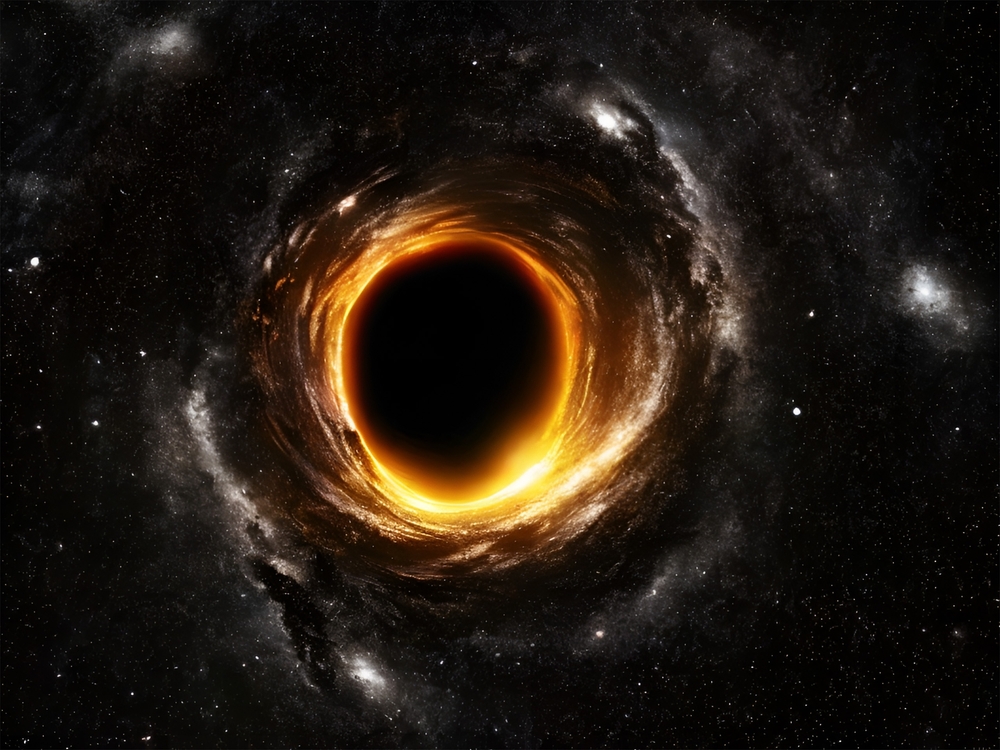Black Holes Aren’t the End: New Theory Suggests They Are Tunnels, Not Traps!

Some say falling into a black hole means reaching the end—no return, no light, no future. But what if that’s not the full story? What if that so-called end is only a passage—an unseen door opening into something entirely different?
Recent research challenges the idea of black holes as cosmic prisons. Instead, it offers a new possibility: black holes may be tunnels, not traps. Not the universe’s final sentence, but its dramatic pause before the next word.
Space has always carried metaphors for the human journey—mystery, collapse, rebirth. A black hole swallowing light mirrors those moments in life when all seems lost. But science now suggests that even in the deepest gravity wells, time does not simply stop. Energy doesn’t vanish. Change keeps happening.
And maybe that’s the deeper truth—within the universe, and within every human heart. Where something breaks down, something else may be beginning. Not by denying the darkness, but by moving through it.
Overview of Traditional Black Hole Theory

Black holes have long stood as symbols of finality. According to Einstein’s theory of general relativity, these cosmic giants form when a massive star collapses under its own gravity. The result is a region of space so dense that nothing—not even light—can escape its pull. At the core lies the singularity, a point where matter is compressed infinitely, and the known laws of physics begin to fall apart.
Scientists describe the boundary around a black hole as the event horizon—the point of no return. Cross it, and all paths lead inward. No signal, no object, no information can make its way back.
This traditional view paints black holes as one-way destinations. Like emotional sinkholes, they represent the idea of irreversible collapse—both in the universe and in life. It’s a model built on gravity’s dominance and time’s surrender.
Dr. Robie Hennigar of Durham University calls the singularity “the most mysterious and problematic part of a black hole. It’s where our concepts of space and time literally no longer make sense.” According to general relativity, everything heads toward that center, pulled tighter and tighter until it reaches an infinite end.
And physicists don’t like infinity. It signals that a theory has hit its limit. It raises a red flag that says, something is missing here.
This is where the new thinking begins. Not by rejecting Einstein’s brilliance—but by looking beyond the cracks it left behind.
What If Black Holes Don’t End—They Change?
A growing number of physicists are now asking a powerful question: what if black holes don’t end with destruction—but with transformation?
Using the tools of quantum mechanics, researchers from the University of Sheffield have proposed a radical shift in thinking. Instead of seeing the singularity as a final wall, they suggest it might be a bridge. A transition. A point where matter and energy stop collapsing and begin expanding again—outward, not inward.

In this theory, a black hole could eventually become a white hole—an object that pushes matter and energy out, rather than pulling it in. It’s the mirror image of a black hole. Where one consumes, the other releases. Where one seems like an ending, the other feels like a beginning.
Dr. Steffen Gielen, one of the study’s co-authors, explained: “In quantum mechanics, time as we understand it cannot end, as systems perpetually change and evolve.” That means, even inside a black hole, change doesn’t stop. Time doesn’t freeze. Something must come next.
The study simplifies the math using a two-dimensional model of a black hole, called a planar black hole. While it’s not the exact shape found in space, the core idea may still apply to real, three-dimensional black holes.
This shift in thinking goes beyond abstract theory. It rewrites what a black hole means. No longer just a destroyer of information and light—it becomes a cosmic recycler. A system that gives back what it once swallowed. In the universe, and in human experience, that idea hits deep: what seems like an irreversible collapse might be part of a larger cycle. A dark phase may be the start of something unimagined. Not an end. A return. A re-formation.
Time, Dark Energy, and the Hidden Flow Within

Time usually feels personal—measured in seconds, heartbeats, memories. But in the fabric of the universe, time might be something far stranger. According to new research, dark energy—the mysterious force driving the universe’s expansion—could be what actually defines time itself.
Dr. Steffen Gielen suggests that time may not just depend on the observer’s point of view, as Einstein once proposed. Instead, time could be linked to dark energy, which exists everywhere, all at once. “We propose that time is measured by the dark energy that is present throughout the universe,” Gielen explains.
If true, this changes more than physics textbooks. It redefines what happens inside black holes. It suggests that time doesn’t die at the singularity—it flows through it, shaped by the same force that stretches galaxies apart. And if time flows, then evolution continues. Movement continues. A black hole isn’t stuck. It transitions.
In this view, nothing remains permanently trapped—not light, not matter, not even time. Strong quantum fluctuations, those tiny bursts of energy that pulse through space, may build up at the heart of a black hole. When they reach a tipping point, they could reverse the collapse and create a white hole on the other side.

It’s a concept that’s hard to visualize, but the message is powerful: transformation may be woven into the universe itself. What appears broken may be part of a larger process. What feels frozen could still be moving—just in a way not yet seen.
From Cosmic Theory to Human Truth
Black holes were once seen as the ultimate dead ends. But if these new theories are right, they may actually be transitions—gateways, not graves. And that idea doesn’t just reshape physics. It speaks directly to the human experience.
Because everyone, at some point, faces moments that feel like singularities. A relationship collapses. A dream ends. A loss leaves behind silence so heavy it feels like gravity itself. In those moments, it’s easy to believe nothing can escape. No light. No way forward.

But nature rarely stays still. If the universe is built on motion, on change, on energy cycling through even the darkest places—then no moment stays final forever. Just as black holes may evolve into white holes, endings in life may carry within them the seeds of something new.
Dr. Pablo Antonio Cano Molina-Niñirola, part of a team working on singularity-free models of black holes, explained it like this: “Matter that falls inside a regular black hole would ultimately exit the black hole through a white hole located in a different universe or in a disconnected region of the same universe.”
Translation? What goes in, must come out. Even what disappears might return in another form.
This doesn’t erase the pain of collapse. It doesn’t promise easy answers. But it offers something better: a reason to keep going. A reason to stay curious. A reason to believe that even in silence, the universe may still be speaking.
Every End Holds a Door to the Next Chapter

Black holes once stood as final chapters in the cosmic story—immense, inescapable, unforgiving. But science is rewriting that script. Instead of silence, there may be echoes. Instead of destruction, renewal. Instead of a void, a tunnel.
These discoveries are still unfolding. White holes remain theoretical. The math is complex. The evidence is still out there, waiting. But the possibility—that even the darkest force in space may eventually give way to light—offers something science rarely does: hope.
Not the kind that denies reality, but the kind rooted in motion. Change. Possibility.
A star collapses. A black hole forms. Time doesn’t stop. Energy doesn’t vanish. Eventually, maybe, matter rushes out the other side.
And maybe that’s the deeper message. When everything seems to break down—when it feels like life has swallowed all light—what looks like the end may just be a turning point. What feels like falling may be the beginning of becoming.
Not a trap. A tunnel. Not goodbye. Just a pause before what comes next.
Featured Image: Shutterstock
Loading...






